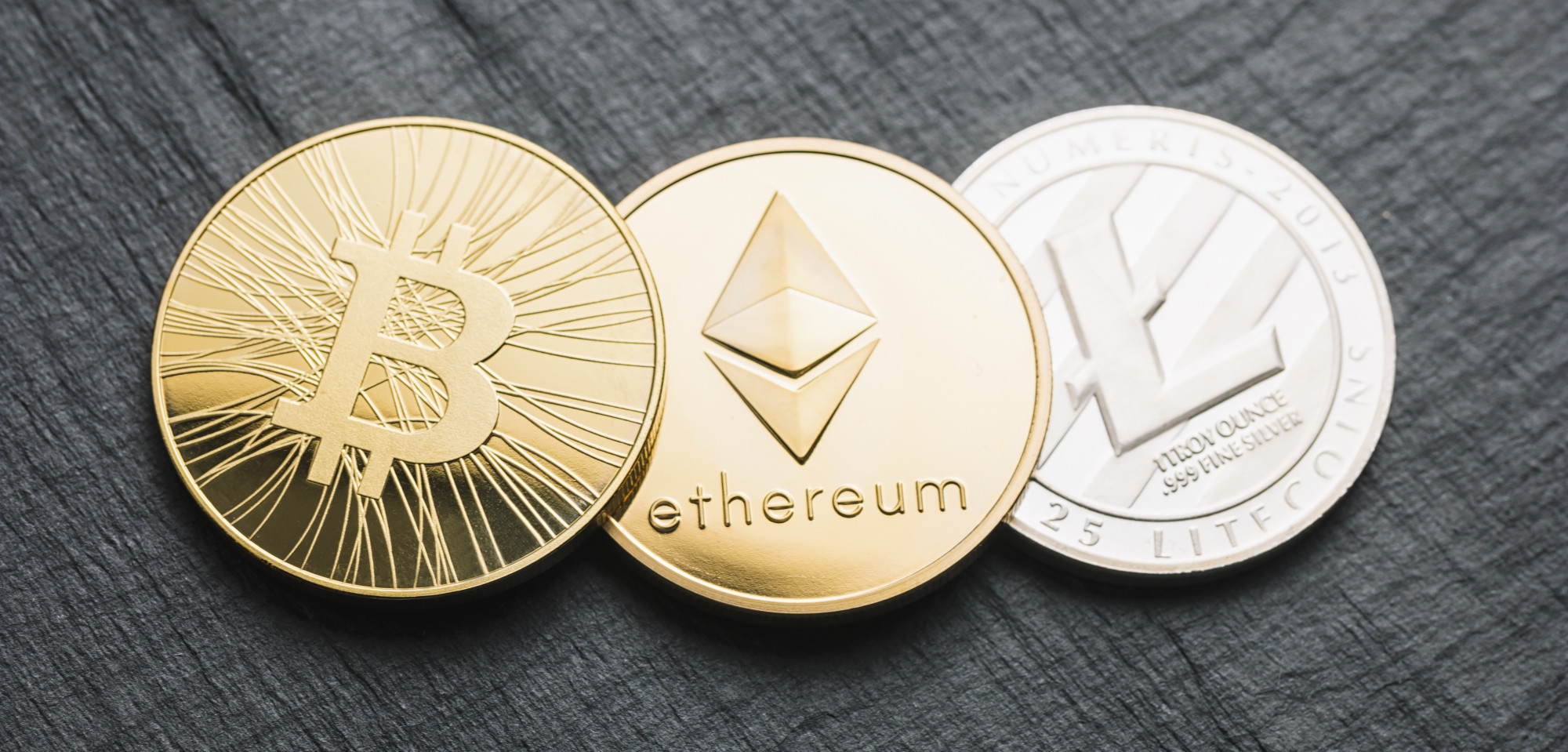
Navigating the Crypto Seas: A Comprehensive Guide to Exchanging Bitcoin and Ethereum
Table of Contents
Introduction: The Digital Gold Rush
The advent of Bitcoin in 2009 ignited a financial revolution, introducing the world to the concept of decentralized digital currency. This was swiftly followed by Ethereum in 2015, which expanded the possibilities by introducing smart contracts and a platform for decentralized applications (dApps). Today, the cryptocurrency market is a vast, dynamic ecosystem with thousands of digital assets. For newcomers and veterans alike, the fundamental gateway into this world is the cryptocurrency exchange. Knowing how to securely and efficiently exchange Bitcoin or exchange ETH is the first critical step in your crypto journey.
This article serves as your detailed guide. We will demystify the different types of cryptocurrency exchanges, explore the mechanics of trading, delve into crucial security considerations, and provide a roadmap for navigating the process of swapping one digital asset for another.
Understanding the Landscape: Types of Cryptocurrency Exchanges
Not all exchanges are created equal. They cater to different needs, from the simplicity of a first-time buyer to the complex demands of a professional trader. Understanding these distinctions is key to choosing the right platform.
1. Centralized Exchanges (CEXs)
Centralized exchanges are the most common and user-friendly platforms. Think of them as the stockbrokers of the crypto world. Companies like Coinbase, Binance, and Kraken act as intermediaries, holding users’ funds and facilitating trades on their internal order books.
- Pros:
- User-Friendly: Intuitive interfaces, making them ideal for beginners.
- High Liquidity: They attract a large number of users, ensuring you can usually buy or sell assets quickly at market price.
- Advanced Features: Many offer sophisticated trading tools like margin trading, futures, and staking.
- Cons:
- Custodial: You do not hold the private keys to your wallet on the exchange. The famous adage “not your keys, not your crypto” applies here, as the exchange controls your assets.
- Security Risks: Being large, centralized repositories of funds, they are prime targets for hackers.
- KYC/AML Requirements: Mandatory identity verification processes can be a privacy concern for some.
2. Decentralized Exchanges (DEXs)
DEXs operate without a central authority. They are peer-to-peer marketplaces that run on blockchain technology, typically using automated smart contracts to execute trades directly between users’ wallets. Uniswap and SushiSwap on the Ethereum network are prime examples.
- Pros:
- Non-Custodial: You retain full control of your private keys and funds throughout the trading process.
- Privacy: Most DEXs do not require identity verification (KYC).
- Censorship-Resistant: No central party can freeze your assets or prevent you from trading.
- Cons:
- Complexity: The interface can be daunting for beginners. Users are solely responsible for their actions, and mistakes (like sending to a wrong address) are irreversible.
- Lower Liquidity: For less popular tokens, liquidity can be thin, leading to higher price slippage.
- Gas Fees: On networks like Ethereum, transaction fees (gas) can be prohibitively high during times of congestion.
3. Instant Exchanges and Aggregators (The Best of Both Worlds)
This newer category bridges the gap between CEXs and DEXs. Platforms known as instant exchanges or aggregators do not hold your funds. Instead, they scan hundreds of CEXs and DEXs to find you the best possible rate for your swap and then facilitate the transaction directly from your personal wallet.
This method is incredibly efficient for users who simply want to exchange Bitcoin for another coin without creating multiple exchange accounts. For instance, if you want to find the best rate to exchange ETH for Litecoin, an aggregator will do the legwork for you, providing a seamless, non-custodial experience. Services like SwapSpace fall perfectly into this category, offering a user-friendly interface that compares rates across the entire market.
The Step-by-Step Process: How to Exchange Your Cryptocurrencies
The exact process varies by platform, but the general workflow remains consistent.
Step 1: Choosing Your Platform
This is the most critical decision. Consider:
- Your Experience Level: Are you a beginner? A CEX might be easier. Are you privacy-conscious and tech-savvy? A DEX could be better.
- The Assets You Want: Ensure the platform supports both the coin you have and the coin you want.
- Fees: Compare trading fees, withdrawal fees, and network gas fees.
Step 2: Registration and Security (Primarily for CEXs)
For a CEX, you will need to create an account and undergo Know Your Customer (KYC) verification, which involves submitting a government ID. Immediately enable two-factor authentication (2FA) using an app like Google Authenticator—never SMS-based 2FA, as it is vulnerable to SIM-swapping attacks.
Step 3: Depositing Funds
- On a CEX: You will deposit your existing Bitcoin or Ethereum into your exchange wallet. Always double-check the deposit address and network type. Sending Bitcoin on the Ethereum network will result in permanent loss.
- On a DEX or Aggregator: You connect your personal wallet (e.g., MetaMask, Trust Wallet) to the platform. Your funds never leave your wallet until the trade is executed.
Step 4: Executing the Trade
- On a CEX: You navigate to the trading pair (e.g., BTC/ETH), choose between a market order (instant execution at current price) or a limit order (set your desired price), and execute the trade.
- On a DEX/Aggregator: You select the currencies you wish to swap, the platform shows you the best available rate from its integrated services, you approve the transaction in your connected wallet, and wait for the blockchain to confirm it.
Step 5: Securely Withdrawing Your Assets
If you used a CEX, your new assets are now in your exchange wallet. To adhere to best security practices, you should withdraw them to your own personal, secure hardware or software wallet. On a DEX or aggregator, the new assets are sent directly to your wallet, completing the non-custodial process.
Security First: Protecting Your Digital Wealth
The decentralized nature of crypto means you are your own bank. This comes with immense responsibility.
- Use Strong, Unique Passwords: A password manager is essential.
- Enable 2FA: Always use an app-based authenticator.
- Beware of Phishing: Double-check URLs and never click on links in unsolicited emails or messages. Scammers are rampant.
- Cold Storage: For significant holdings, use a hardware wallet (cold wallet) like Ledger or Trezor. These keep your private keys offline and immune to online hacking attempts.
- Double-Check Addresses: Always verify the first and last four characters of any cryptocurrency address before sending funds. Malware can change copied addresses in your clipboard.
Why Use an Exchange Aggregator? The Case for Efficiency
For many users, especially those not interested in active trading, instant exchange aggregators offer a superior experience. Their core value proposition is simplicity and efficiency.
Instead of creating accounts on five different exchanges to compare who will give you the most Ethereum for your Bitcoin, you can use a single platform that does it instantly. They eliminate the need for registration and KYC for most transactions, reduce the time spent comparing rates, and often provide a better final rate by leveraging fragmented liquidity across the entire market.
For example, if your goal is to find the most efficient way to exchange Bitcoin for a wide array of altcoins, a visit to a service like SwapSpace allows you to see all your options in one place, ensuring you get the best value for your transaction. Similarly, if you’re looking to exchange ETH for Bitcoin or any other asset, the process is just as streamlined, saving you time and maximizing your crypto holdings.
Looking Ahead: The Future of Crypto Exchanges
The evolution of cryptocurrency exchanges is far from over. We are already seeing trends toward:
- Increased Regulation: Governments are working to bring crypto under regulatory frameworks, which may increase security but could impact privacy.
- DeFi Integration: The line between CEXs and DeFi protocols is blurring, with exchanges offering decentralized earning features.
- Cross-Chain Interoperability: The next generation of platforms will make it seamless to trade assets across different blockchains (e.g., Bitcoin for a token on the Solana network) without complex wrapping processes.
- Enhanced User Experience: Platforms will continue to abstract away the technical complexity, making crypto trading as simple as using a traditional finance app.
Conclusion: Your Journey, Your Control
The world of cryptocurrency exchanges is diverse, offering a path for every type of user. Whether you choose the guided simplicity of a centralized exchange, the sovereign control of a DEX, or the efficient best-rate-finding of an aggregator, the power to participate in this digital economy is in your hands.
Your journey begins with a single swap. By understanding the tools available, prioritizing security above all else, and using platforms that empower you to find the best value, you can confidently navigate the exciting waters of cryptocurrency. Remember, the goal is not just to trade, but to build and manage your digital wealth wisely and securely.








